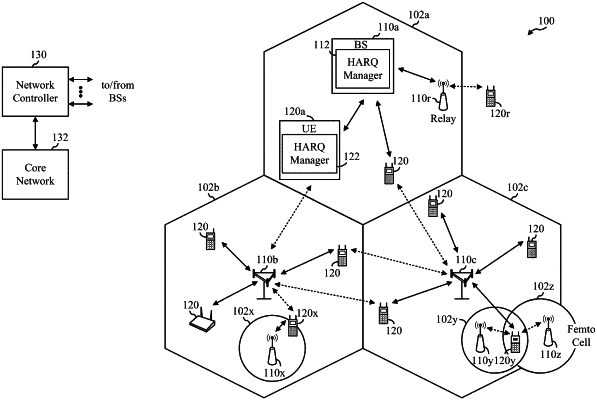| CPC H04L 1/1854 (2013.01) [H04L 1/1812 (2013.01)] | 9 Claims |

|
1. A first network node for wireless communication, comprising:
a processing system configured to:
determine a number (M) of candidate downlink transmission occasions for a time period;
determine a maximum number (k) of simultaneous downlink transmissions the first network node can receive during the time period;
receive one or more downlink transmissions during the time period from a second network node;
encode hybrid automatic repeat request (HARQ) feedback based at least on the number M and the maximum number k, wherein, to encode the HARQ feedback, the processing system is configured to select a HARQ codeword index from a plurality of HARQ codeword indices, wherein each HARQ codeword index in the plurality of HARQ codeword indices corresponds to a respective binary vector of a plurality of binary vectors, and wherein each binary vector of the plurality of binary vectors comprises M elements and a respective weight less than or equal to k, and
transmit the encoded HARQ feedback to the second network node, wherein the encoded HARQ feedback comprises the selected HARQ codeword index.
|